The Sun has an activity cycle of 11 years. During the minimum, the Sun takes a rest and displays less sunspots. But, active as she is, she takes a quick run to reach the maximum. We are now near such a maximum. On Sunday, April 21, 2002, the Sun strongly pointed out that she is very dynamic and entertained us with an X1.5 outburst of x-rays. The letter in the name, here X, indicates the class of the outburst or flare: we have a C, M and X category. A C-flare is quite normal for the Sun, an M-flare clarifies that she is agitated, if an X-flare occurs, we will for sure have a closer look at the event (and sometimes even make a webpage about it). The spacecraft GOES detects outbursts by measuring permanently the X-rays coming from the Sun.
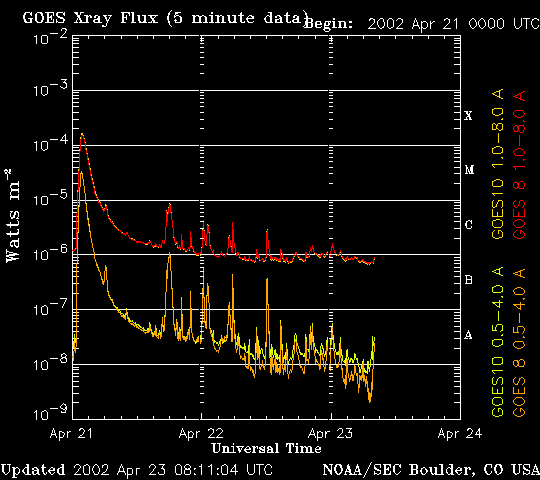
This X-class flare was also detected by EIT (extreme ultraviolet imaging telescope) on board the spacecraft SOHO, in the spectral line of Fe XII with a wave length of 19.5 nm. In the movie, pay special attention to the indicated active area on the west limb.
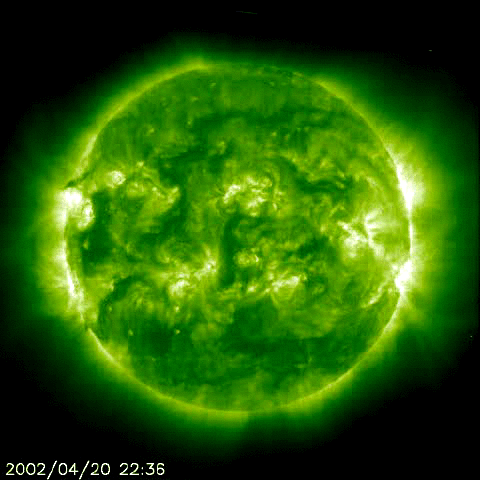
After the outburst, one can see small white speckles on the screen. This is noise caused by protons and other energetic elements bombarding the telescope. The satellite ACE that measures the speed of the solar wind was even knocked out because of these energetic particles! You can see this on the yellow graph on which the curve lapses down shortly after midnight.
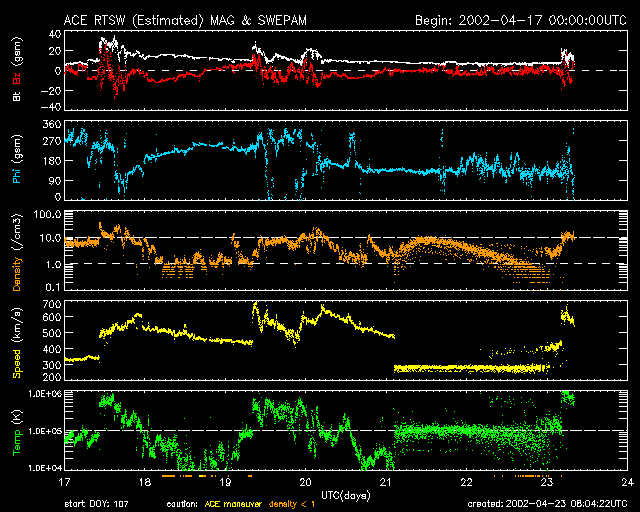
As a consequence of this violent outburst, there was a proton event. The spacecraft GOES measured half an hour after the flare a proton flux (the number of protons that hits the telescope in one second) that crossed the "event threshold" (dashed line).
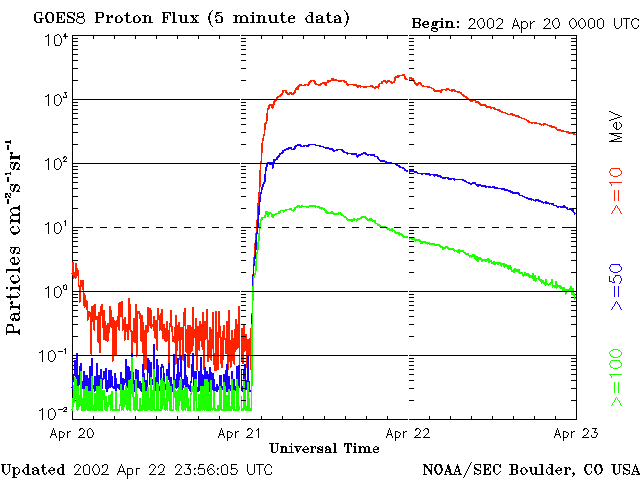
One could also feel the flare down on Earth. A strong radio blackout, R3 on the NOAA scale , occurred due to the electromagnetic radiation impinging upon the Earth's atmosphere. R3 radio blackouts result in widespread HF radio communication outages on the dayside of the Earth and can also degrade low frequency navigation signals. Shortly after the blackout, a strong solar radiation storm (corresponding to the proton flux enhancement), S3 on the NOAA scale, came up. S3 solar radiation storms can lead to single-event upsets in spacecraft electronics, noise in spacecraft imaging systems, and reduction in the efficiency of solar panels. Radiation storms also cause degraded HF radio propagation in the polar regions and may be of some concern to aircraft on polar routes.

In these beautiful pictures in EUV (19.5 nm) made by TRACE, a spacecraft observing the Sun's extreme ultraviolet radiation from an Earth orbit, the post-flare loops are visible. These magnetic arcades are filled with hot plasma material emitting EUV-rays.

The coronograph LASCO, an instrument on SOHO, shows clearly that a partial coronal mass ejection is associated with the X-flare.You can see this CME as a white cloud of gas that is blown away and partially encircles the Sun. Two days later, on April 23, the arrival of this plasma cloud was measured by CELIAS, another instrument on SOHO. CELIAS measured an increased speed (top graph) and density (second graph) of the solar wind (first graph). At that moment, ACE data were still not available. The plasma cloud bumps onto the earth magnetic field. This perturbation causes a geomagnetic storm. In this case, it was only a G1 storm on the NOAA scale.
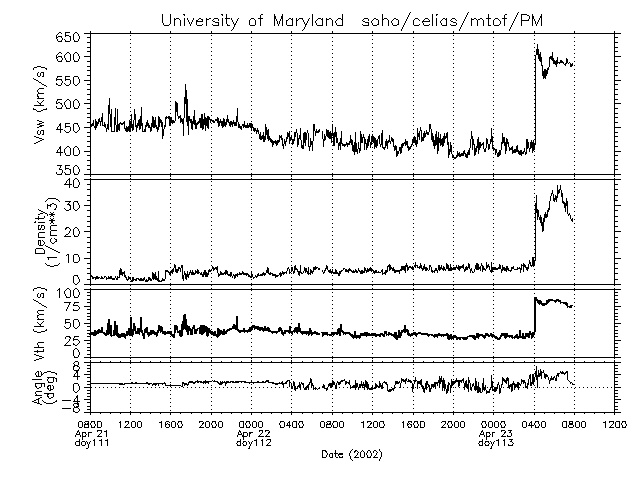
Een nederlandstalige versie van deze tekst is beschikbaar hier.





